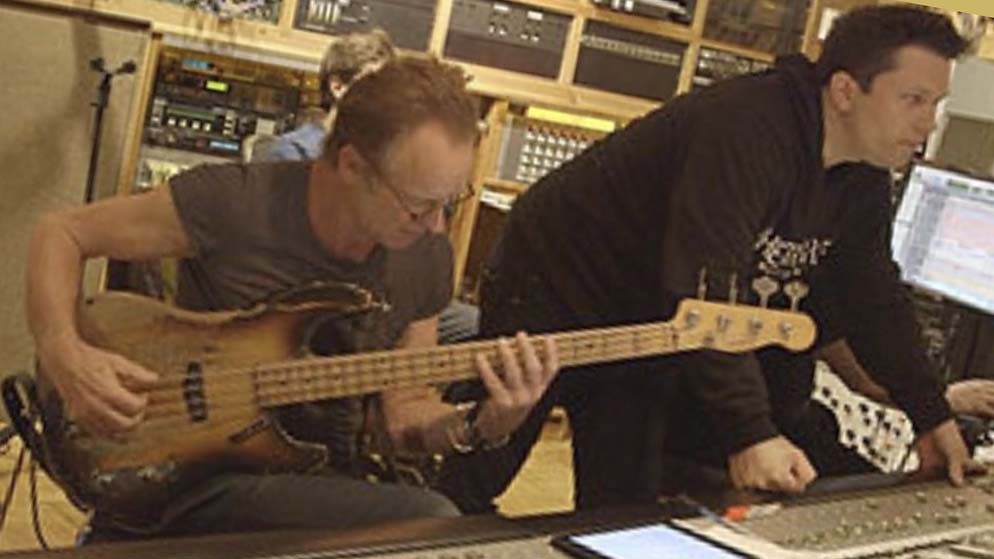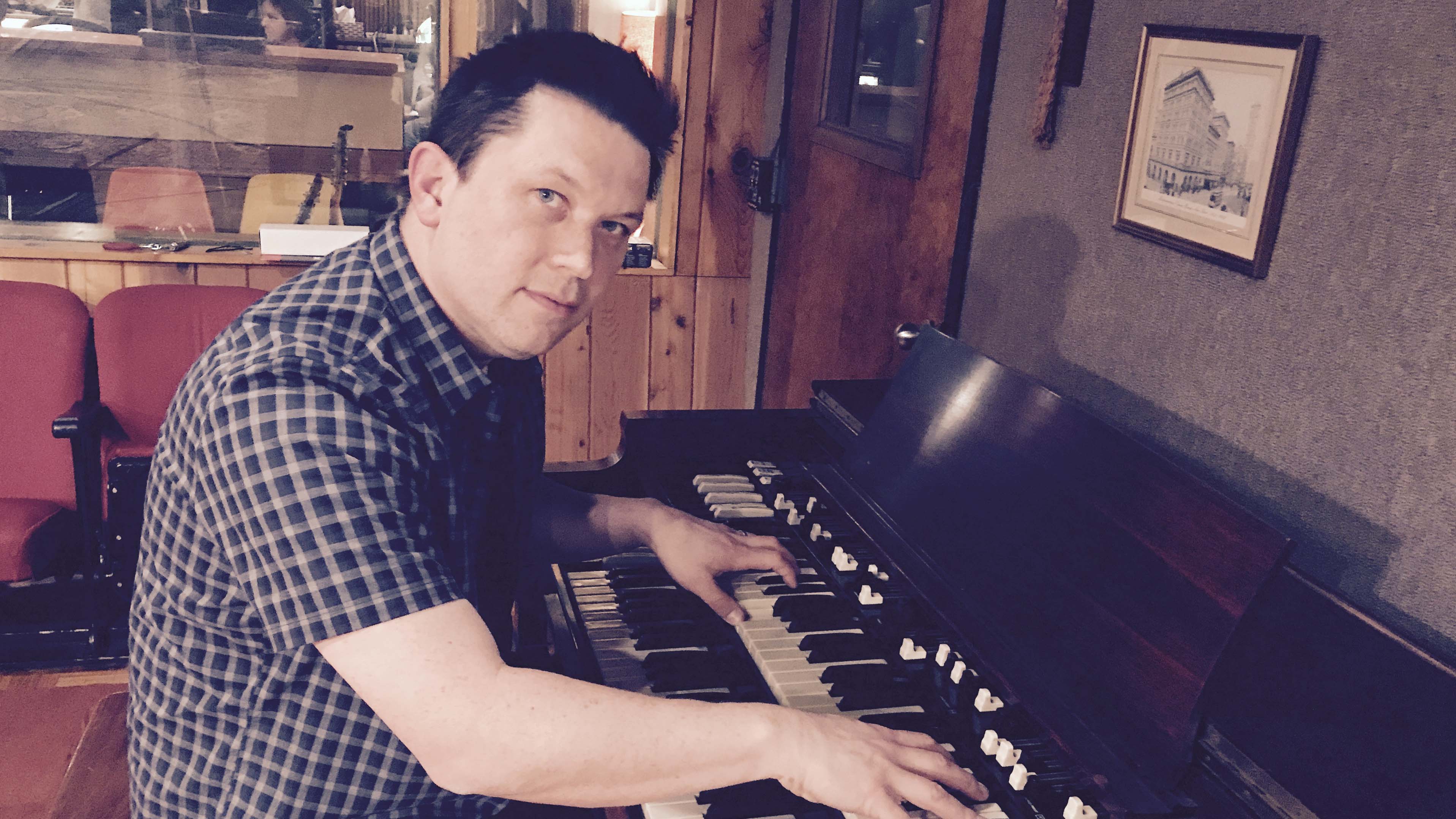Sting's My Songs track-by-track with Martin Kierszenbaum: "The songs are dynamic. They are living and breathing"
Producer/manager dissects same-but-different best-of

My Songs collects 15 of Sting’s most-loved compositions and reworks and rerecords them for the modern era. Think of My Songs as a living, breathing ‘best of’ or a same-but-different alternative to the original recordings, if you will. It’s probably both.
As Sting’s manager and producer Martin Kierszenbaum says, “The idea is that the songs are such evergreens that they don’t necessarily need to be tied to the era in which they were produced.”
If you are a musician and you know music theory, you are awed by the key changes or the turnarounds, or the passing notes. If you are not a musician, you are wowed by the lyrics or the wonderful melody
"Sting’s identity and songwriting fundamentals are so strong that his songs can withstand reinterpretation and retain their shape and emotional freight. But even so, Message In A Bottle, Can’t Stand Losing You, Every Breath You Take . . . How do you approach reworking them?
Alongside producers Dave Audé and Jerry Fuentes, Kierszenbaum had to somehow make My Songs a reality in the studio. Audé took the likes of Brand New Day and If You Love Someone Set Them Free and – cognisant of the fact Sting is one of the finest bassists in popular music – judiciously dialled in more bass and outsized the groove a little.
For Kierszenbaum, it meant hewing close to how Sting performs the songs live. As he walks us through My Songs, Kierszenbaum explains the thinking behind the production choices.
But reapproaching and revisiting classic songs also serves an exercise in appreciation – of songwriting, performance, and of the cultural weight and importance of the music. There are few artists in the popular music pantheon whose compositions are so formally rigorous.
Sting’s arrangements are always in dialogue with each other; the music speaks to the lyrics and vice-versa; his bass guitar is in turn a rhythmic counterpoint and melodic reinforcement.
Get the MusicRadar Newsletter
Want all the hottest music and gear news, reviews, deals, features and more, direct to your inbox? Sign up here.

There’s that mastery of feel, too. Take So Lonely, written in 1975, before The Police were formed. That is like the Rosetta Stone to understanding Sting; the plaintive melody in a verse driven by a syncopated reggae beat followed by an urgent eighth-note chorus is a leitmotif of his discography.
Throughout Sting’s work there is a sleight of hand that secrets musically complex – or musically audacious – ideas into abundantly accessible forms. Songs we can all dig.
That’s part of what makes Sting great, believes Kierszenbaum. “Sting will make music so that it can be enjoyed on different levels,” he says. “If you are a musician and you know music theory, you are awed by the key changes or the turnarounds, or the passing notes. If you are not a musician, you are wowed by the lyrics or the wonderful melody.
"Whatever it is, there are so many layers to his music, and you are right; he does avant garde things but he does them seamlessly and musically, and that is his gift.”

1. Brand New Day
We didn’t want to have them chained to a certain era because a certain keyboard or reverb was used, or a certain drum sound.
“That one was very capably produced by Dave Audé. Brand New Day was really the first step in this My Songs album because it was just an idea to reinvigorate the song for a performance that Sting was going to do on Times Square in New York City for New Year’s Eve on national TV.
“It was received very warmly and that gave Sting the idea to do the same thing with some other songs, and collect them and put them out. It is somewhere in between completely redoing them and updating them so that they are production-era agnostic.
“We didn’t want to have them chained to a certain era because a certain keyboard or reverb was used, or a certain drum sound.”
2. Desert Rose
“That’s another one that Dave Audé did. It’s so great. He used elements from the original and added new things, which is a luxury that we had because Sting recorded them in the first place and so sometimes, especially on a song recorded originally by him solo, he was able to take a few things from the originals – if you wanted some sound effects, some keyboards, whatever.
“But for the most part they were redone. Most of the Sting original [solo] songs were produced by Dave Audé; they were replayed, redone, but sometimes he would find a nugget on the original multis and try to emphasise it, maybe a little loop, a little sample, a little vocal that had been muted.”
3. If You Love Someone Set Them Free
“Dave Audé extracted the sort of dance element of that song originally. I think he was the one who talked about emphasising the bass part, and Sting loved it. At the moment, that’s Sting’s favourite. That’s probably the biggest departure from an arrangement point of view. But it also feels very organic to take it to that place. [Withstanding reinterpretation] is the mark of a great song.
“If you think about it, Sting’s been doing that live all the time. The songs are dynamic. They are living and breathing. He has always treated them as blueprints, not necessarily as monoliths that can’t be changed.”
4. Every Breath You Take
“That was probably the scariest one to tackle because it has literally been named the number one most performed song in the BMI Performance Rights Catalog. They have fourteen-and-a-half million titles in their catalogue and the one that’s most played is Every Breath You Take.
That was probably the scariest one to tackle because it has literally been named the number one most performed song.
“Every Breath You Take is really produced using the energy from Sting on bass and vocal, Dominic Miller on guitar, Rufus Miller, his son, another very accomplished guitarist on second guitar, and Josh Freese on drums, and I played keyboards.
“I mostly recorded it live in the studio at the Village, in LA. We did it in Studio D, because that’s where Fleetwood Mac recorded Tusk, and it’s got this beautiful ambience. I made it a live thing and then added to it with piano and organ. It’s pretty direct. Dominic is on his Strat. Rufus is on his Les Paul, which is like the rock ’n’ roll nexus of nirvana! It was a Les Paul and Strat going through Mesa/Boogie amps.”
5. Demolition Man
“I played organ on and that is almost completely one-take live. We set up at Avatar in New York City – it’s now called the Power Station again. Vinnie Colaiuta on drums. Dominic Miller on guitar. Sting and I were in the control room and Sting was set up with a bass and a mic, and I had my keyboard.
“We just played it live the whole way through and I think the only overdub is the second guitar that Dominic played in harmony, in his solo. That’s a Strat. That one started getting wild and woolly and we let it go there.
“We didn’t tame it. It felt so good to play it live like that! Vinnie’s incredible drumming just fueled us. I didn’t manicure that one whatsoever. Sting sang live while we were playing, in the control room, straight through the mic. We didn’t want to overthink it and I think the energy got captured in the recording. I’m so proud of that.”
6. Can’t Stand Losing You
“That one we recorded in Ocean Way, in Nashville. I don’t know if you know it but it is a converted church, and it has this wonderful expansive ambience. We really tapped into that. Again, set up live. We had Josh Freese on drums. We had Dominic Miller on a Strat. And we had Rufus Miller on his Les Paul and Sting, again, playing bass live and singing.
We had Josh Freese on drums. We had Dominic Miller on a Strat. And we had Rufus Miller on his Les Paul and Sting, again, playing bass live and singing.
“My approach was just to do the way they do it live, set up live and play together rather than overdub it just to capture the urgency. We’d been doing the 57th & 9th Tour which was Sting’s album campaign, and that tour lasted 10 months; everybody was just a well-oiled machine so why not take advantage of that and capture it to . . . I was gonna say to tape but it’s to hard drive! [Laughs]
“They are such accomplished musicians – magic is just going to happen and at that point it’s just a case of recording it properly and balancing it. I tried to make the engineering the paramount thing. I tried to capture the sonics and the musicianship as transparently as possible.”
7. Fields Of Gold
“Recently Paul McCartney did an interview with Jarvis Cocker on Facebook Live and Jarvis Cocker asked him, ‘What is the song you wish you had written?’ And Paul McCartney said Fields Of Gold. That shows you the kind of gravitas the song has. It’s so cinematic and epic! And so emotional and romantic.
“The production of that song was handled by Jerry Fuentes, who is a member of The Last Bandoleros. They are such an interesting, eclectic band; they come from San Antonio. They live in Nashville. Jerry is such an accomplished guitarist.
“He used some of Dominic’s original parts but added a ton of new, wistful acoustic guitars that match the timbre of the song. Sting resang it and enfused it with all this life, and living – it’s really powerful.”
8. So Lonely
“We stayed really close to the original arrangement but – it’s very subtle – but to me it’s got a different swagger and a swing because it’s got a little bit of Jerry’s south-west spice.
“Maybe on repeated listens you’d be able to discern that, which is really fun because that makes it slightly different to the original – other than the recording techniques and the presence, and its a little drier with its treatments in terms of reverbs and stuff like that. That one I produced with Jerry Fuentes and he played all the guitars and did a great job.”
9. Shape Of My Heart
“Again, there we set up at the Village. It was live. Dominic was playing – the way he plays that riff is amazing, having come up with it himself – and then we had Rufus, his son, in that session. What I love about that song, that recording on My Songs, is that it really showcases how robust Sting’s voice has become.
"He has got so many tools in the toolbox with his voice now, and I think it really serves the song because it’s a song about love, but it’s also about giving it a chance. I think with the tone Sting has now he is really able to convey that. The way he conveys emotion now is so robust and deep and moving.”
10. Message In A Bottle
“That one we did in Studio D again. The Village is a really special place. It’s a converted Masonic temple in the west part of LA. Studio D is this really big [room] but it’s really feng shui – it really feels good. So, Message In A Bottle, we just set up the band.
"We just set up Josh and Rufus and Sting and we had all of The Last Bandoleros – on one mic, if I remember right – and we just did it live. We didn’t put Sting in the control room there; we had him in with the band so there is tons of bleed on his vocal track. It’s a live recording, just not in front of an audience – other than Grammy Award-winning engineer Robert Orton, Grammy Award-winning engineer Tony Lake and a few assistants.
"I tell you what I love about that song and it might seem minor, but I love the hand claps The Last Bandoleros do on the last break. I love hand claps. They sound so good. And I know why the Bandoleros clapped; it’s because that’s the part of the song that breaks down and they encourage the audience to clap, right? S
"So instinctively they just did it in the studio, and now I’ve got four people clapping live on one mic – it just sounds so organic and energetic and contagious. They did it just because they were feeling it and that’s the best.
"I love witnessing that. When we go to mix it I’m like, ‘Turn that up!’”
11. Fragile
“Fragile, what can you say about that song? It’s one of the best songs ever written by any human. The production was done by Dave Audé but what I love about it, with Sting, talking about it together, they made it sound very modern but they absolutely retained the classic emotion to it and that’s a hard thing to do. That’s a hard thing to do and I think they achieved it.
“I mean, obviously, I am an advocate and an evangelist for Sting’s music, being his manager and producer, but I really believe that his songs are a cut above and they will be listened to in a hundred years.”
12. Walking On The Moon
“That we recorded at Ocean Way, in Nashville, and again I think that version really benefitted from the environment, from the ambience, from the beautiful converted church here in Nashville. It is just expertly played, just the counterpoint between Dominic and Rufus – and Josh Freese, man!
“What Sting does with the bass part, you’ve got the syncopation, and the rests in there, it makes you feel like gravity is not there. That’s something we had to preserve. What I love about Josh Freese’s playing, particularly on Walking On The Moon, is that he is the perfect nexus between technique, which is immaculate, and serving the song, and taste.
“Josh is one of those rare drummers who can play anything; he can play jazz, play odd time signatures, but also will always serve the song and never get in the way of it.”
13. Englishman In New York
“Well, Dave Audé produced that one and what he did that I think was really smart was that he preserved a lot of the original elements, especially Branford’s [Marsalis] sax playing, which is like inspired, and he just sort of updated the beat a little bit. But also, as you say, he gave it some space for the melody to soar.
“What an iconic song. Tons of new versions of that song need to be made by all sorts of people – it’s so good!”
14. If I Ever Lose My Faith In You
“Dave Audé produced that one. I think he did a great job in creating a contrast between the verses and the chorus. He obviously kept Stevie Wonder’s harmonica up front and centre, as he should [laughs]. There are nice dynamics. You’ve got a little bit of a tempered verse and then it just soars into the chorus. We all follow Sting’s instincts.
“All these productions are done with Sting involved in every nuance, and he gives us a lot of direction and instruction. The instruction is often very specific. A lot of times we will have very specific musical conversations that will get us another vantage point or get us out of a little [rut] if we are stuck somewhere. I can’t tell you how much I learned. Beyond being enjoyable it was educational.”
15. Roxanne
“That performance does a couple of things for me. First of all it captures the urgency of that song. Also, Sting wrote that song in Paris, and Roxanne is the main character in Cyrano de Bergerac, so it was fitting, to me, that we included a version recorded in France.
“It was mixed incredibly by Robert Orton. Robert has won four Grammys himself and mixed everything from Mumford & Sons to Lana del Ray, Lady Gaga - he is amazing.
"The Last Bandoleros, again, sang backing vocals onstage, but I think they got a lot of help from the audience and that’s what I wanted to feature prominently in the mix. Again, because there is so much energy, so much kinetic energy from the audience at the Olympia, and I think it kind of underscores the epicness of this watershed song, which really kind of opened everyone’s eyes to Sting’s compositions.”
Jonathan Horsley has been writing about guitars and guitar culture since 2005, playing them since 1990, and regularly contributes to MusicRadar, Total Guitar and Guitar World. He uses Jazz III nylon picks, 10s during the week, 9s at the weekend, and shamefully still struggles with rhythm figure one of Van Halen’s Panama.
“Every note counts and fits perfectly”: Kirk Hammett names his best Metallica solo – and no, it’s not One or Master Of Puppets
“I can write anything... Just tell me what you want. You want death metal in C? Okay, here it is. A little country and western? Reggae, blues, whatever”: Yngwie Malmsteen on classical epiphanies, modern art and why he embraces the cliff edge










